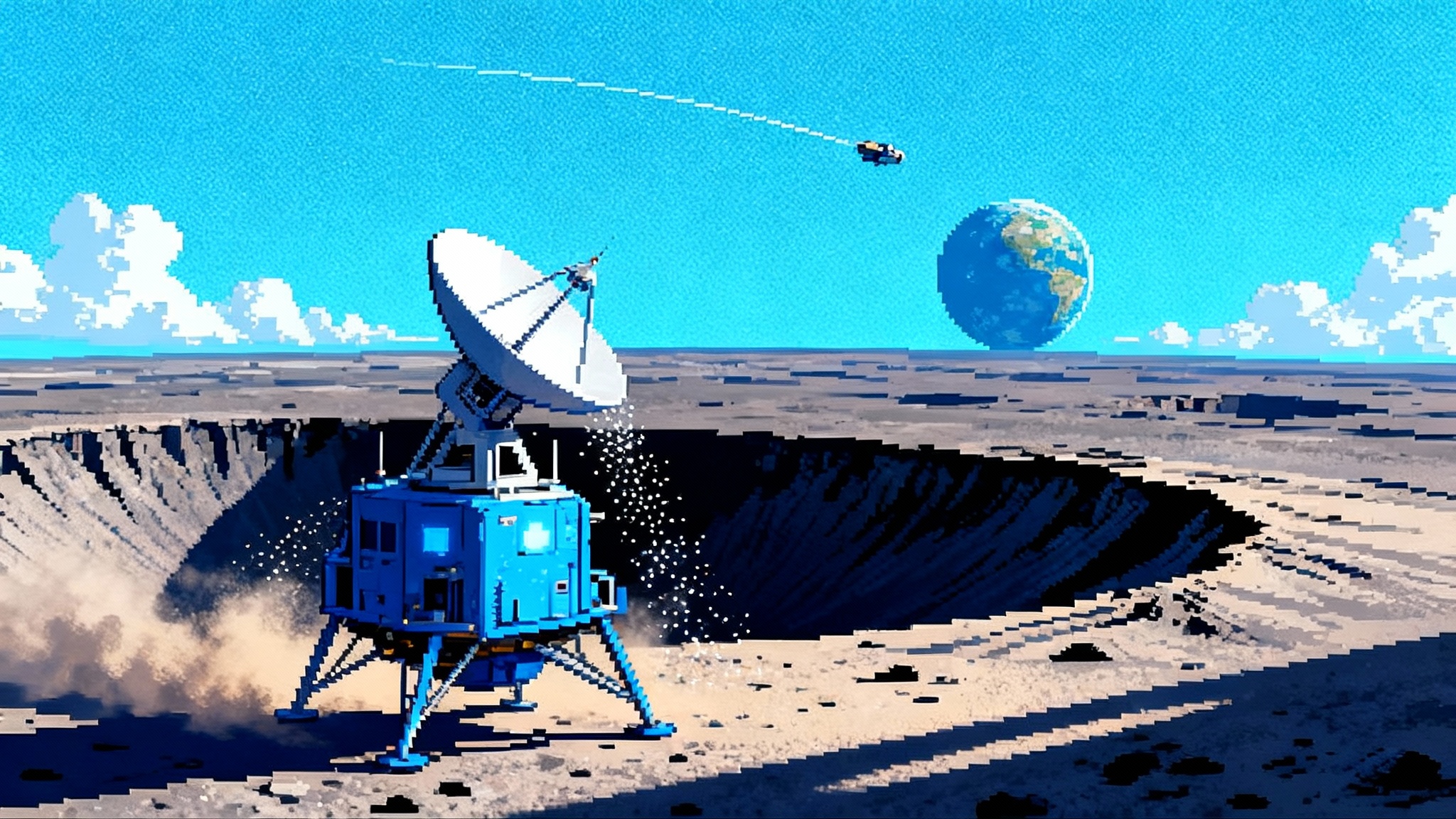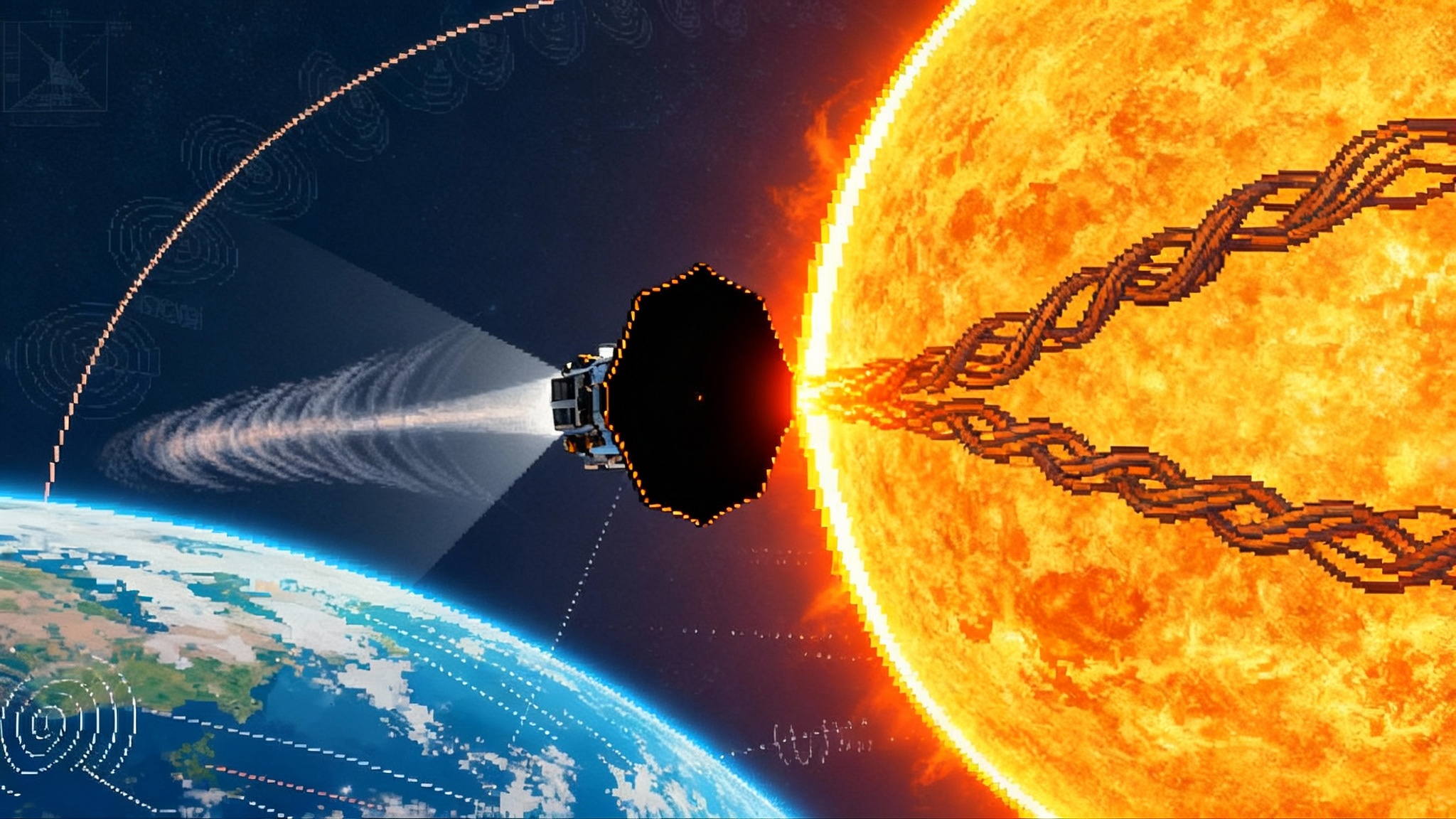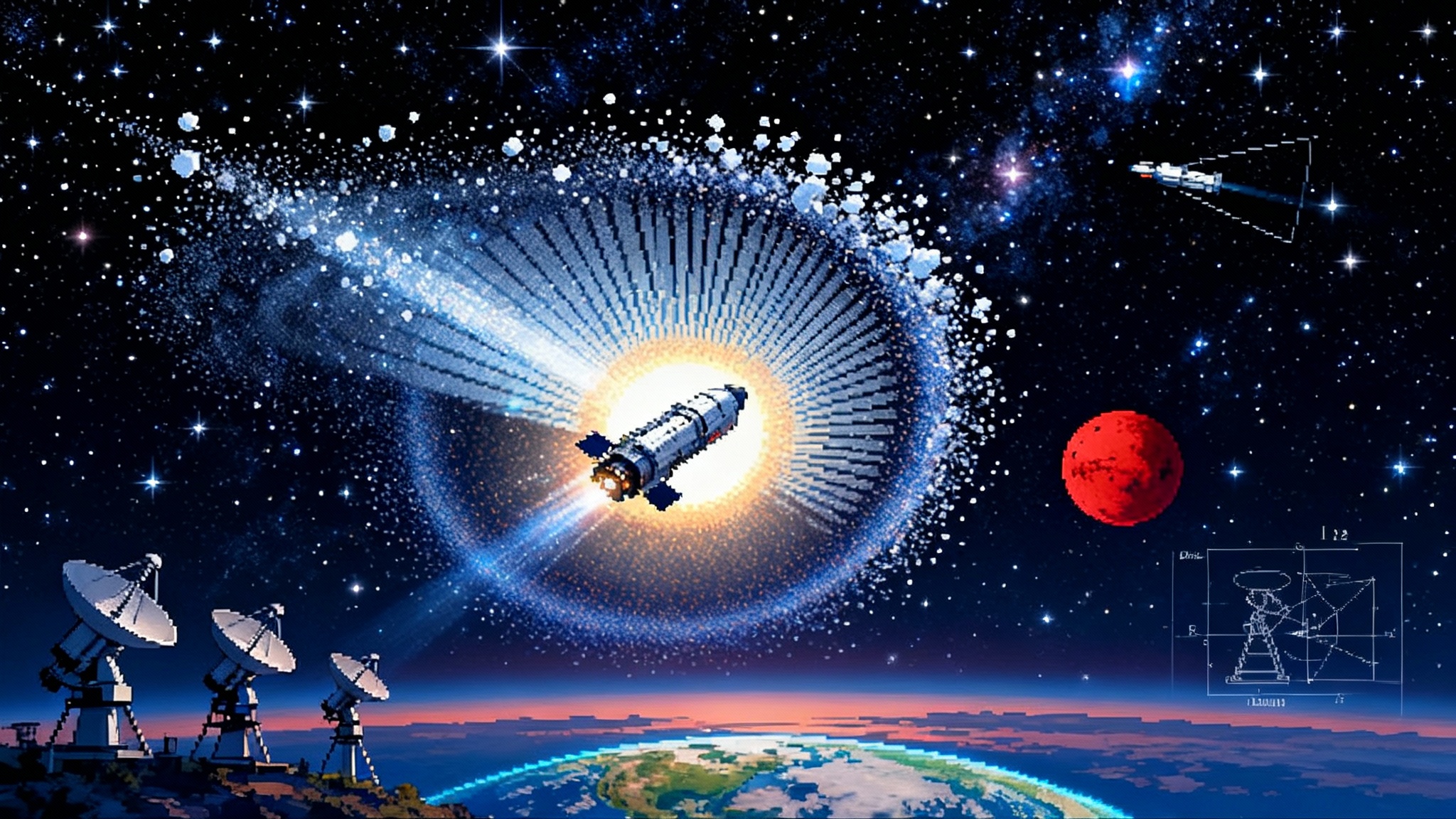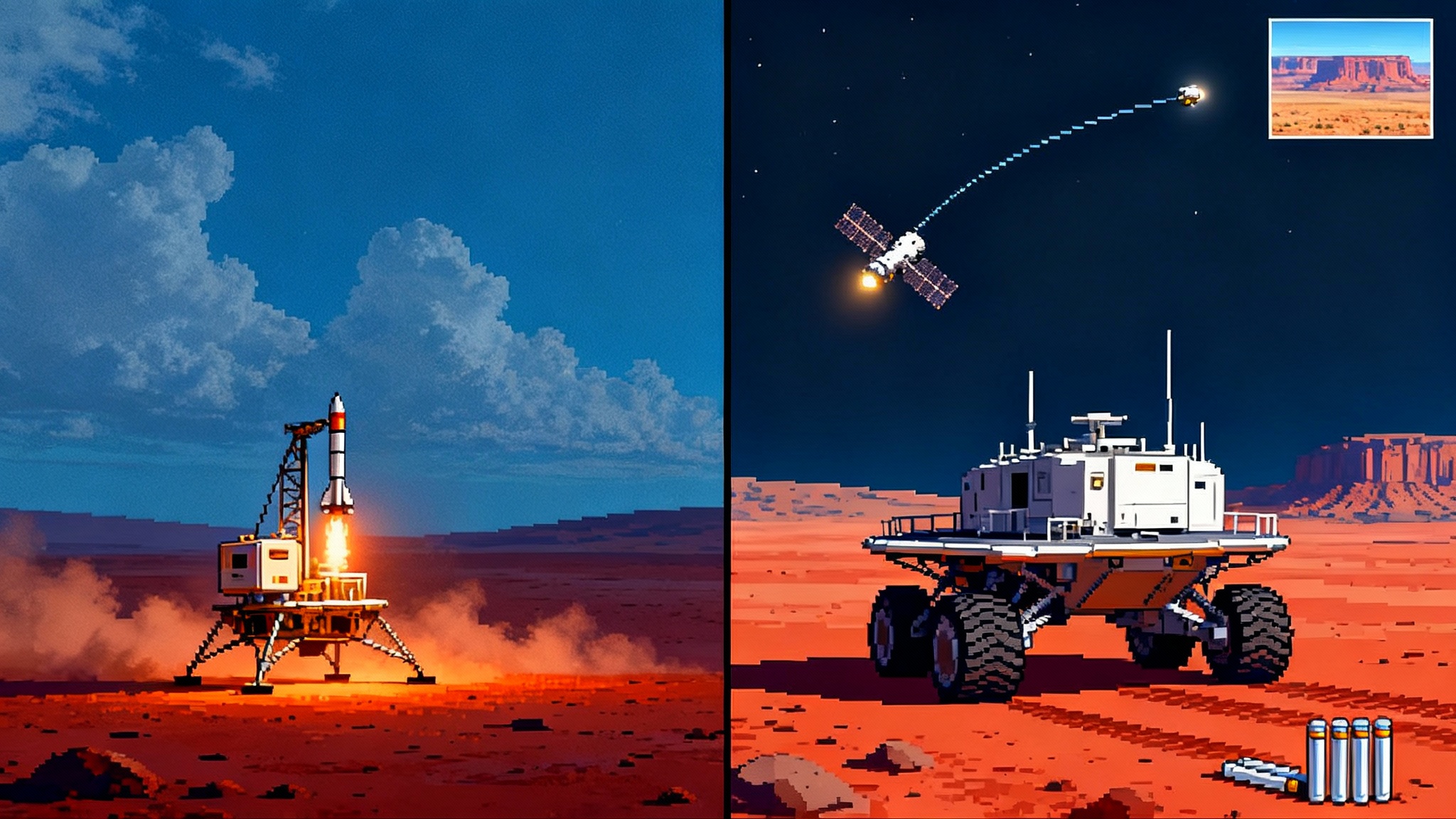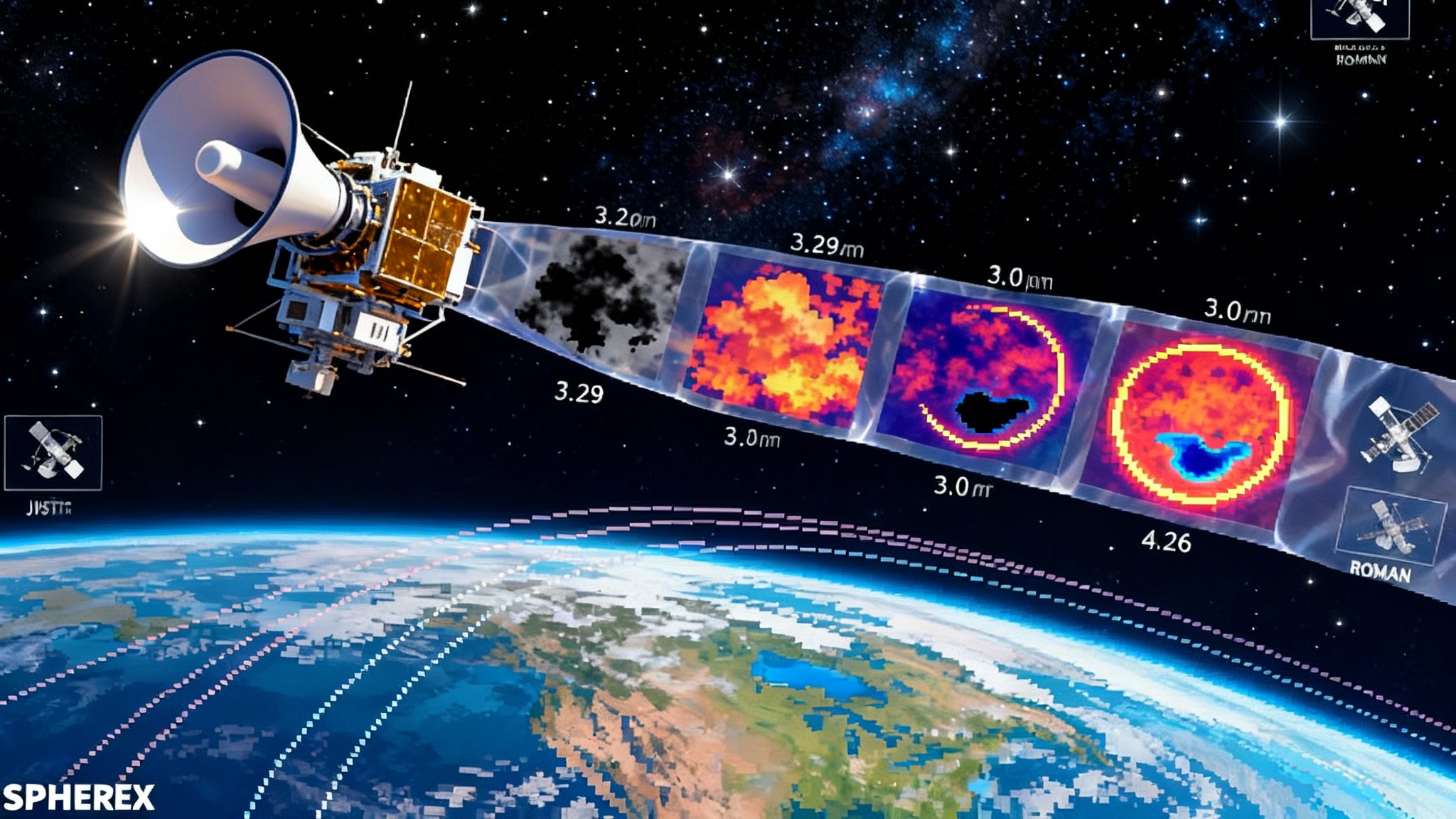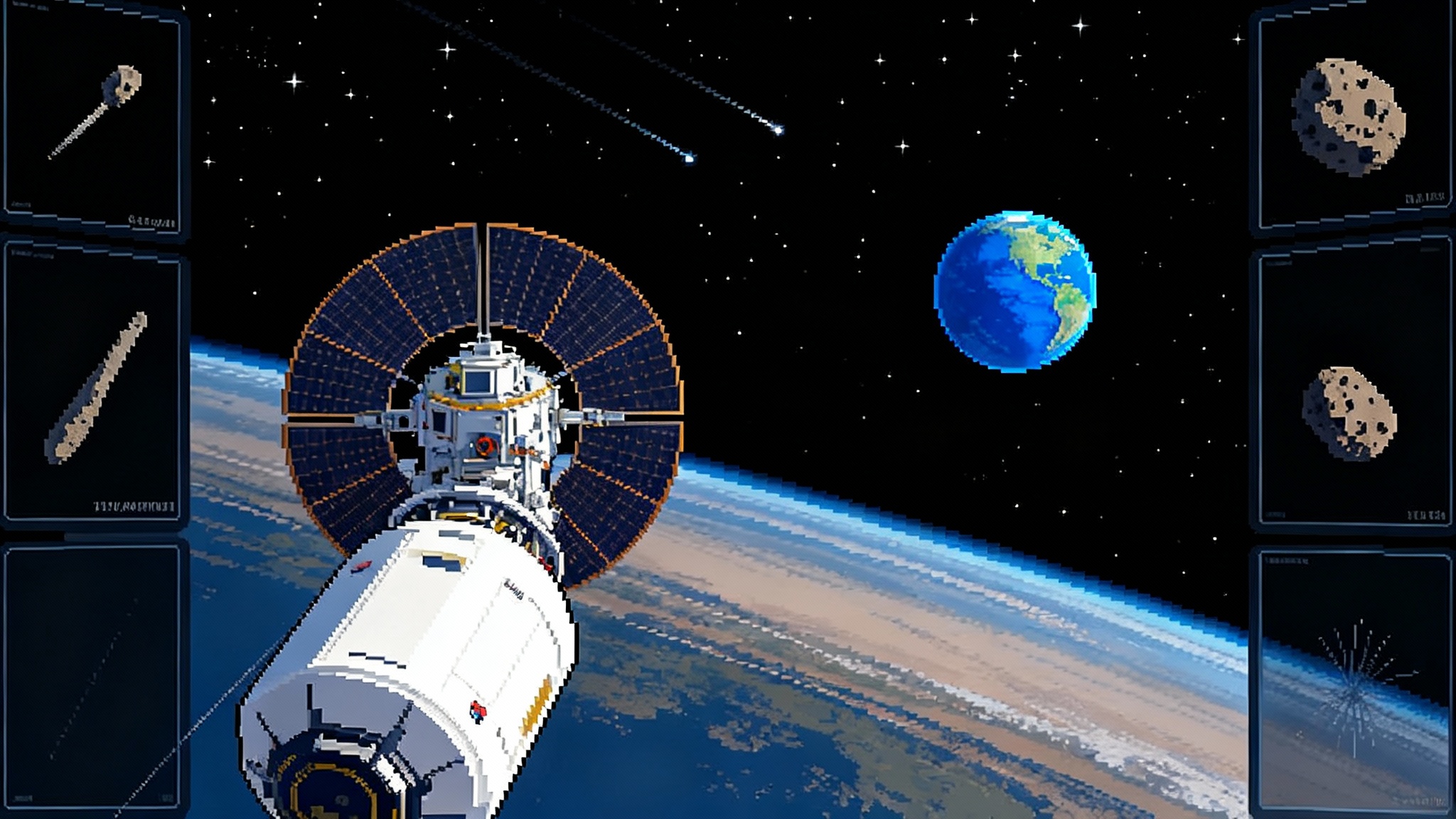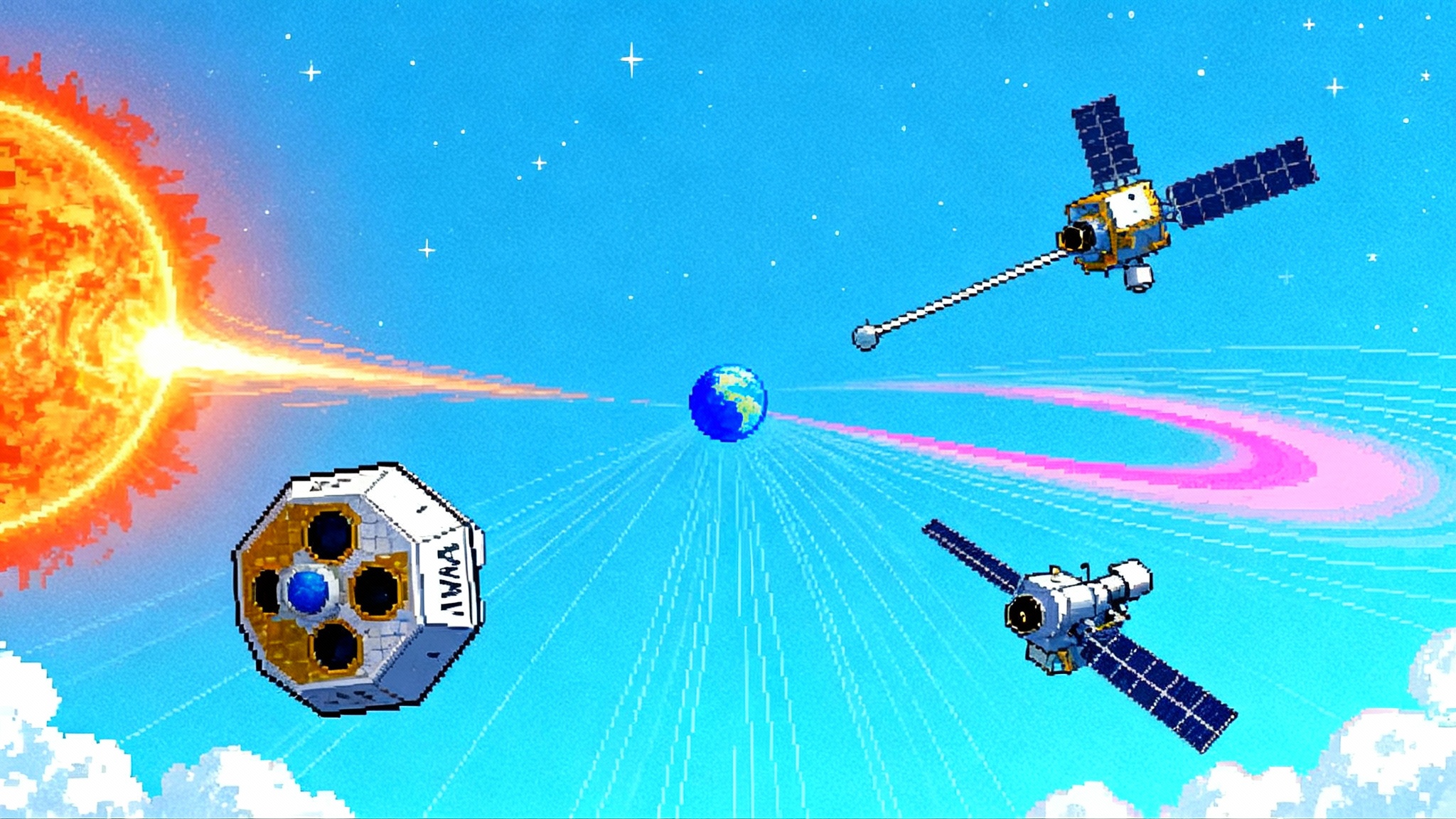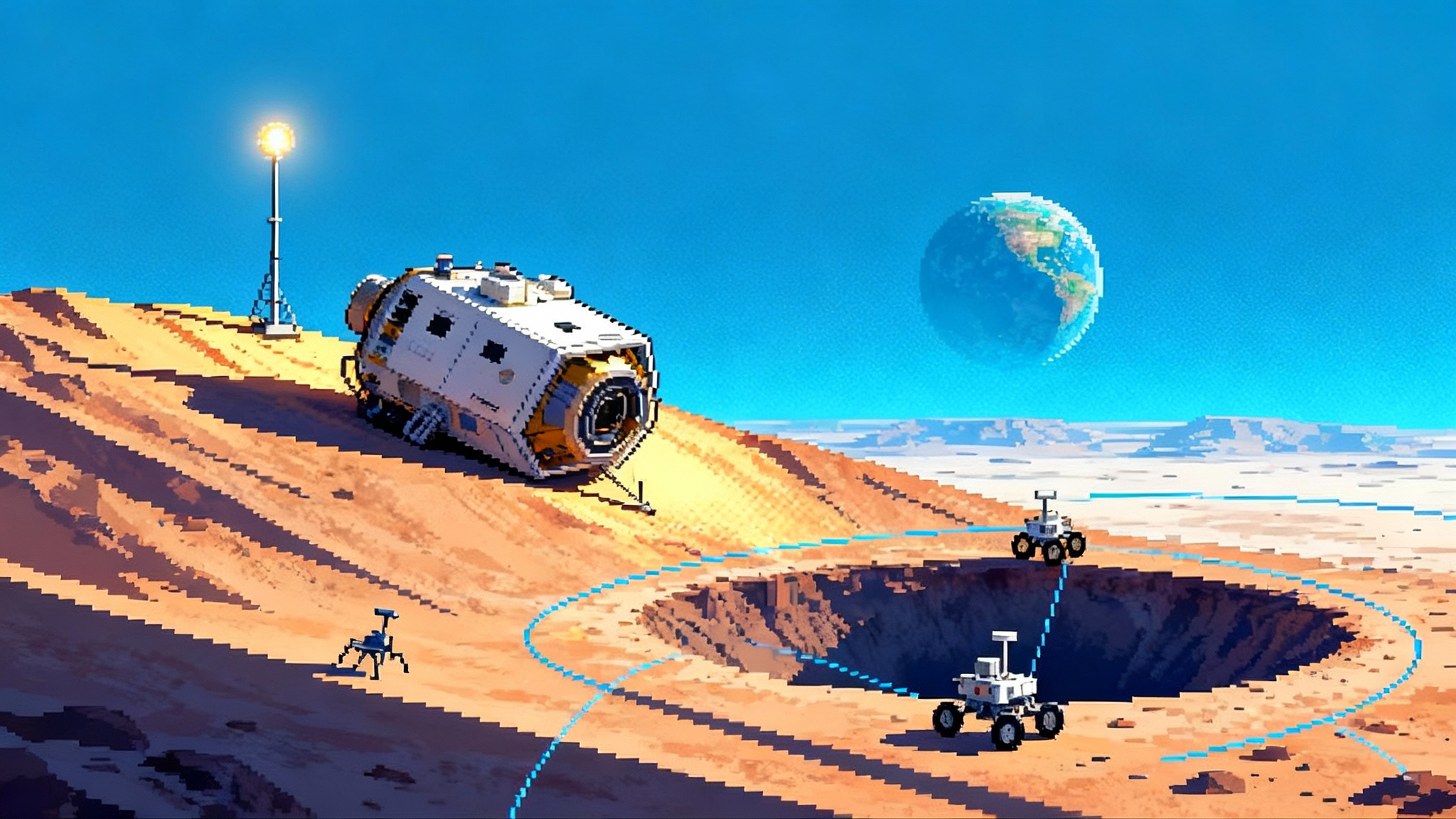Apophis 2029: OSIRIS‑APEX slingshot starts a global drill
After a precision Earth flyby on September 23, 2025, NASA's OSIRIS-APEX is racing toward Apophis to turn a safe 2029 close pass into a full-scale planetary defense rehearsal. Here is the four-year plan and why it matters.
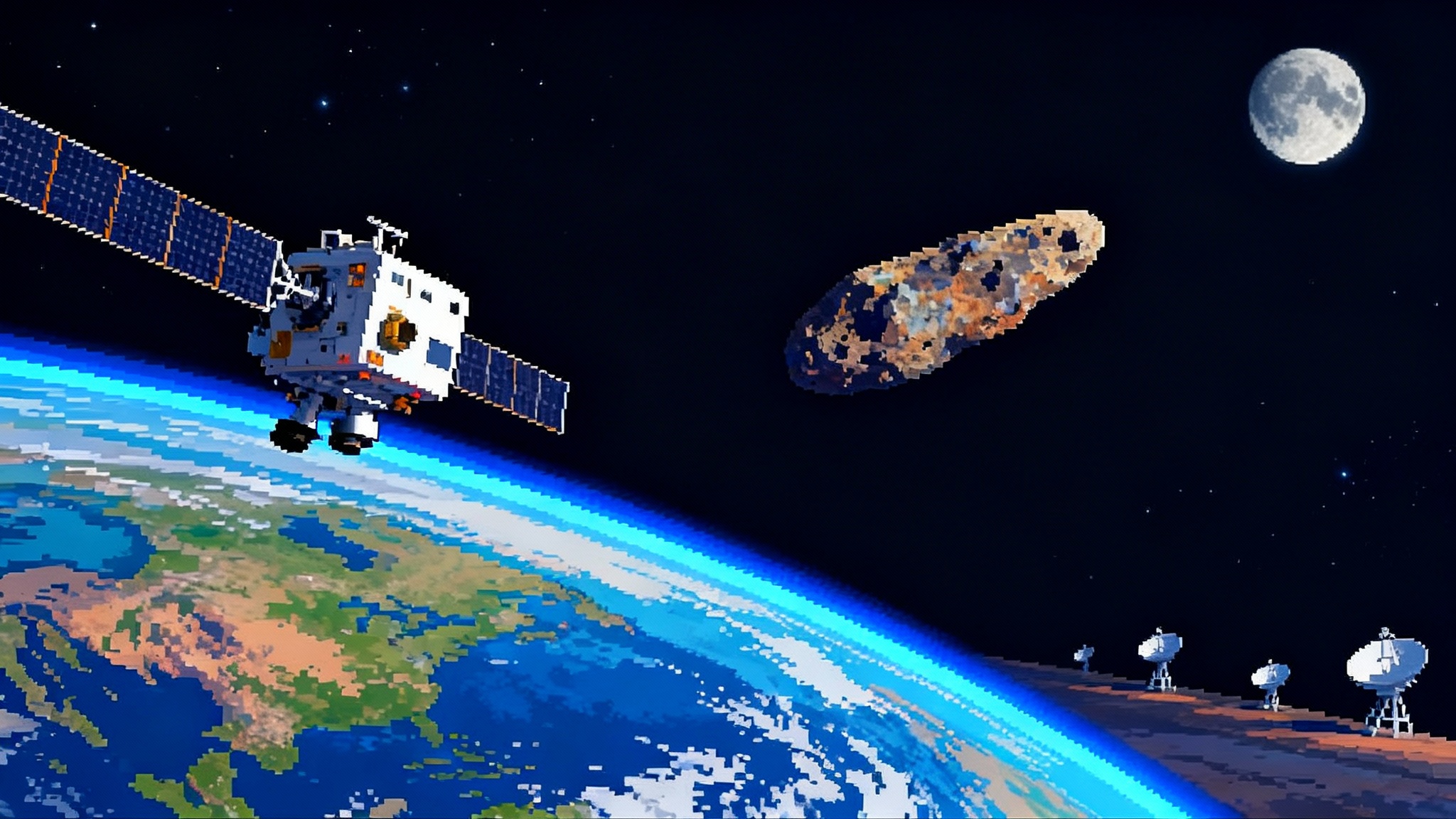
Breaking: the practice run for a once-in-a-lifetime flyby just began
At 12:56 p.m. Eastern on September 23, 2025, NASA’s OSIRIS‑APEX spacecraft skimmed about 2,100 miles above Earth, stealing a sliver of our planet’s momentum to bend its path toward the asteroid Apophis. The maneuver is the starter pistol for a four-year sprint that will culminate on April 13, 2029, when Apophis sails safely past Earth closer than many high-orbit satellites. If we use this window well, we can turn a zero-risk close pass into the decade’s most useful space-exploration drill. NASA’s pre-flyby note confirms the altitude and timing in its NASA’s OSIRIS‑APEX Earth slingshot brief.
This is not hype. Apophis will miss us by a comfortable margin, yet pass only about 20,000 miles above the surface. That is rare for a 340-meter object and priceless for science and preparedness. It is a chance to rehearse the full chain of planetary defense: find, track, model, characterize, and communicate with speed and precision.
Why this flyby is a gift rather than a scare
Think of Earth’s gravity as a wrench that slightly loosens a stuck bolt. When Apophis swings by, tidal forces will tweak its orbit, could change its day length, and may rattle its surface. That is a natural laboratory for testing how we would measure changes on a real hazardous object, without the hazard.
OSIRIS‑APEX will be right there. The spacecraft is the same bus that sampled Bennu in 2020. Engineers at Lockheed Martin built it; KinetX Aerospace helps fly it; NASA Goddard oversees mission management; science operations run through the University of Arizona. After rendezvous in April 2029, APEX will map the asteroid and then perform a deliberate “dust-kick.” It will dip to roughly five meters above the surface and fire its thrusters downward to loft grains and pebbles. That plume reveals what lies just beneath the crust and how loosely it is held together, as outlined on NASA’s OSIRIS‑APEX mission page.
The rehearsal value is obvious. If we ever needed to consider a deflection, the first questions would be: What is the target made of, how is it put together, and how will it react under stress? A rubble pile responds differently than a monolithic rock. A dust-kick is a small, controlled nudge that teaches us how a surface behaves without risking a collision.
The four-year sprint: 2025 to 2029
The point is not just to observe Apophis. It is to practice doing everything fast, openly, and together. Here is a practical, time-boxed plan.
1) Stand up the data plumbing in 2025-2026
- Open telemetry by default. Treat APEX cruise images, calibration data, and navigation snippets as test packets for an open pipe. Publish them in near-real time with reliable metadata and latency stamps. The aim is not to scoop science teams. It is to exercise ingestion and quality control that will matter in a real emergency.
- Harmonize format and timing. Use standard ephemeris formats, time systems, and units across agencies. If a student in Tucson can plot a light curve from a small telescope and cross-check it against a Deep Space Network ping, the formats are working. Borrow lessons from how SPHEREx begins a 102-color map to stream calibrated products.
- Connect the ground network. Coordinate radar at Goldstone and the Green Bank Telescope, optical networks from professional observatories, and university arrays. Practice campaign scheduling, not just data capture. Apophis is a moving target; rehearsal means building and testing the calendars that move with it.
Action test: run two weekend-length surge drills per quarter. Push raw frames, quick-look products, and preliminary fits through the same paths an emergency would use. Track latency. Track error rates. Publish a postmortem.
2) Build the modeling muscle in 2026-2027
- Red team the orbits. Invite independent navigation teams to reconstruct APEX trajectories and Apophis ephemerides with a strict clock. Measure how long it takes to converge. Measure how disagreement narrows with each new observation.
- Practice the downstream physics. Standardize how to go from shape models and light curves to thermal inertia, cohesion, and expected ejecta behavior. In a real crisis, these are the inputs for whether to nudge, where to nudge, and when.
- Tie models to communications. Run tabletop exercises where a change in the asteroid’s spin state triggers an update to public risk messaging. Practice wording that is accurate and fast.
Parallel milestone: NASA’s dedicated asteroid hunter, NEO Surveyor, is targeting launch in late 2027 on a Falcon 9. If that schedule holds, its infrared census should be operating as Apophis closes in, feeding the broader defense picture with discoveries that are invisible to optical telescopes that look near the Sun.
3) Train the world in 2027-2028
- Citizen science with a purpose. Organize a global photometry campaign for school observatories and amateurs. Offer a vetted workflow: how to calibrate, how to submit, how to get credit. Light curves from many longitudes beat down systematics and sharpen spin solutions.
- Open notebooks. Encourage research groups to publish reproducible notebooks that take a public radar echo or an optical tracklet to a shape model overnight. This is not about perfection. It is about teaching the muscle memory of compute, iterate, and share, much as we did when Blue Ghost made the Moon commercial.
- Stress the pipes. Simulate a sudden ambiguity in Apophis’s rotation period and watch how data requests, observation windows, and instrument pointing plans adjust. Reward teams that close the loop fastest with transparent methods.
4) The week of closest approach in 2029
- Ground truth from the ground up. Apophis should be visible to the naked eye across parts of the Eastern Hemisphere on April 13, 2029, weather permitting. Coordinate safe public viewings while professional teams execute a tightly scripted radar and optical plan.
- Spacecraft choreography. APEX should have preplanned observation stacks with go-no-go checkpoints that can pivot if surface activity is higher or lower than expected.
- Real-time modeling. Maintain a live fusion of radar, optical, and spacecraft telemetry that updates state vectors and surface change maps as data lands. Treat it like a storm center that refreshes on the hour. Borrow playbooks from how IMAP leads a space-weather stack for multi-stream data.
5) The dust-kick and the after-action in 2029-2030
- Kick with intent. OSIRIS‑APEX’s low pass and thruster firing will loft a measurable plume. The plume is not a stunt. It is a probe of cohesion and grain sizes, which determine how an asteroid reacts to forces, as previewed on NASA’s OSIRIS‑APEX mission page.
- Publish fast, then refine. Commit to a two-tier release: a same-day preliminary analysis of plume dynamics and a peer-reviewed package on a set clock. Speed and rigor can coexist if you plan for both.
- Grade the rehearsal. Score every part of the chain from detection to public briefings. Keep the rubric blunt: latency, accuracy, clarity.
ESA and JAXA are lining up a companion act
Europe’s proposed RAMSES mission would fly in formation with Apophis through the 2029 pass, giving another vantage point on how Earth’s gravity reshapes the asteroid. The European Space Agency has stated that ministers will decide on funding at the November 2025 ministerial, and that Japan’s space agency has advanced collaboration discussions. If approved, RAMSES would arrive for the flyby and share data with APEX. Two spacecraft turn a single-vehicle campaign into a stereo experiment. With two instrument sets you can cross-calibrate, triangulate dust plumes, and catch transient events that one vehicle might miss during a downlink. It also forces data standards. If two agencies cannot align timestamps, pointing kernels, and calibration targets, the field will know immediately and can fix the gaps while it still matters.
What success looks like
Success is not a single splashy image. It is a system that clicks.
- Fast, honest telemetry. Raw APEX packets are tagged, published, and mirrored with documented latency. Down times are telegraphed in advance when possible.
- Cross-checks by design. Ground radar teams and optical observers receive spacecraft-derived ephemerides quickly and return independent fits. Disagreement is logged and resolved visibly.
- Models that update like weather. Public products clearly separate what is measured from what is inferred. When assumptions change, so do the plots.
- A citizen pipeline that works. A motivated high school can follow a recipe, contribute a light curve with quantified uncertainty, and get feedback within a week.
- Communications that teach. Public briefings show both the how and the why, using real data, not stock art.
The concrete gear we need to move now
- Fund the boring bits. The least glamorous work will matter most. That means data schemas, time standards, and public dashboards that do not crash on big days. Put money and named owners on them.
- Pre-commit to open release clocks. Create a simple rule: a quick-look image within hours, a cleaned product within days, and a reviewed product within months. If a timeline slips, say why.
- Train redundancy. Pair every key role with a backup at a different institution and time zone. Run swap drills.
- Lock in joint campaigns. If a companion mission is approved this November, write the cross-calibration plan before hardware freezes. Decide which filters, geometries, and sequences will be identical on both spacecraft and which will be complementary.
- Connect to the discovery pipeline. As NEO Surveyor comes online, point part of its early survey time at validating the handoff from discovery to tracking to characterization. The point is not to find Apophis. It is to prove the plumbing on targets that look like the next Apophis.
What this drill will buy us
- Better odds in a crisis. When minutes count, rehearsed teams do not argue about file formats. They work.
- Realistic physics. A dust-kick on a 340-meter S-type asteroid after a deep gravity pass will anchor models of cohesion and surface failure. That reduces error bars in any deflection scenario.
- A shared language. Planetary defense is not only about rockets and rocks. It is about coordination. When Europe, Japan, and the United States agree on metadata and cadence, everyone gets faster and safer.
- Public trust earned in daylight. People understand drills. If the world watches a clear, calm rehearsal on a day when nothing is at risk, it will be easier to brief the world on a day when something is.
The right kind of urgency
None of this requires panic. It requires craft. OSIRIS‑APEX has already hit its first mark with the Earth slingshot. Apophis will sweep past safely in April 2029, an object of wonder, not worry. The question is whether we use the four years between to make planetary defense boring in the best way. That means standard checklists, reliable dashboards, and trained teams who know one another by name. The payoff will be measured in seconds saved and error bars narrowed when it matters most. Let us rehearse like pros while the stakes are low, so that if we ever need to act for real, we will not be practicing on opening night.
